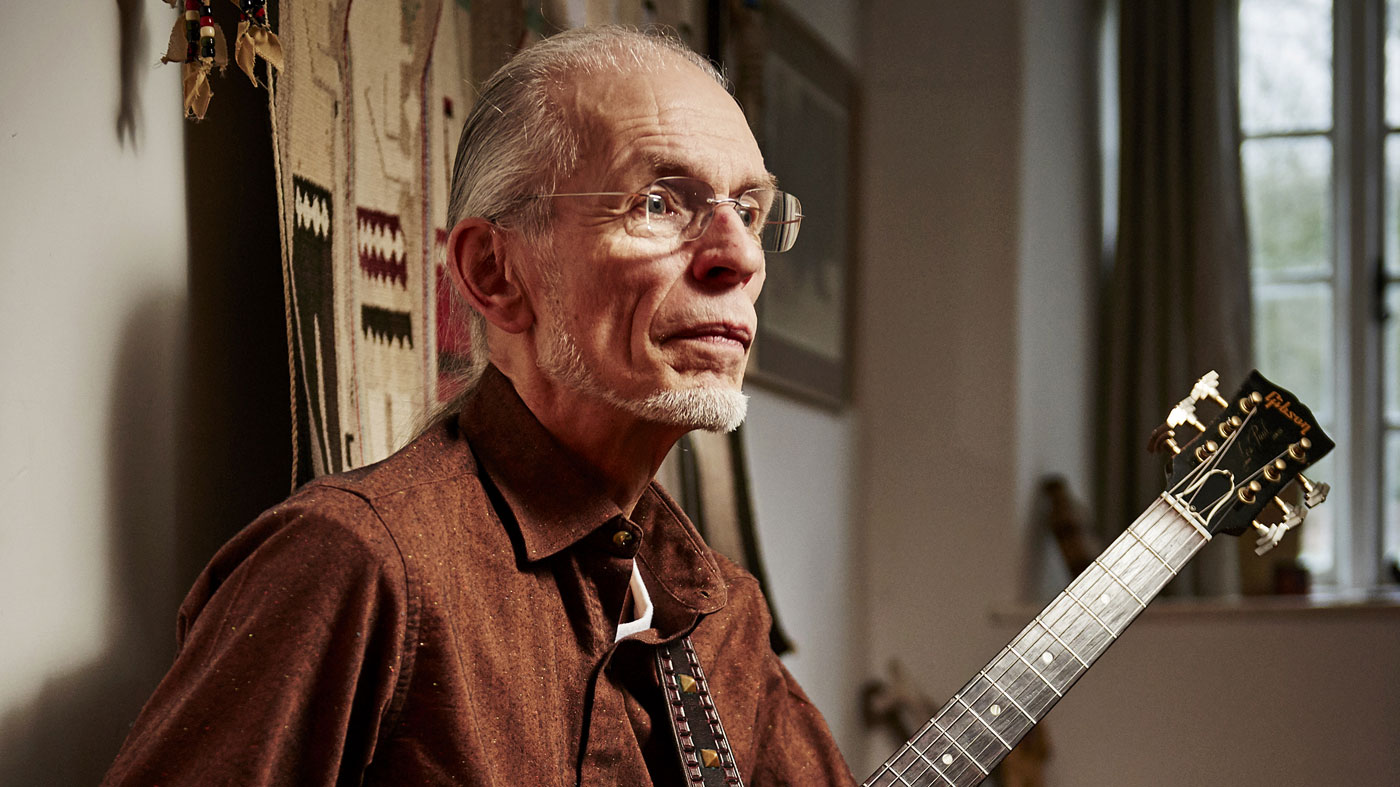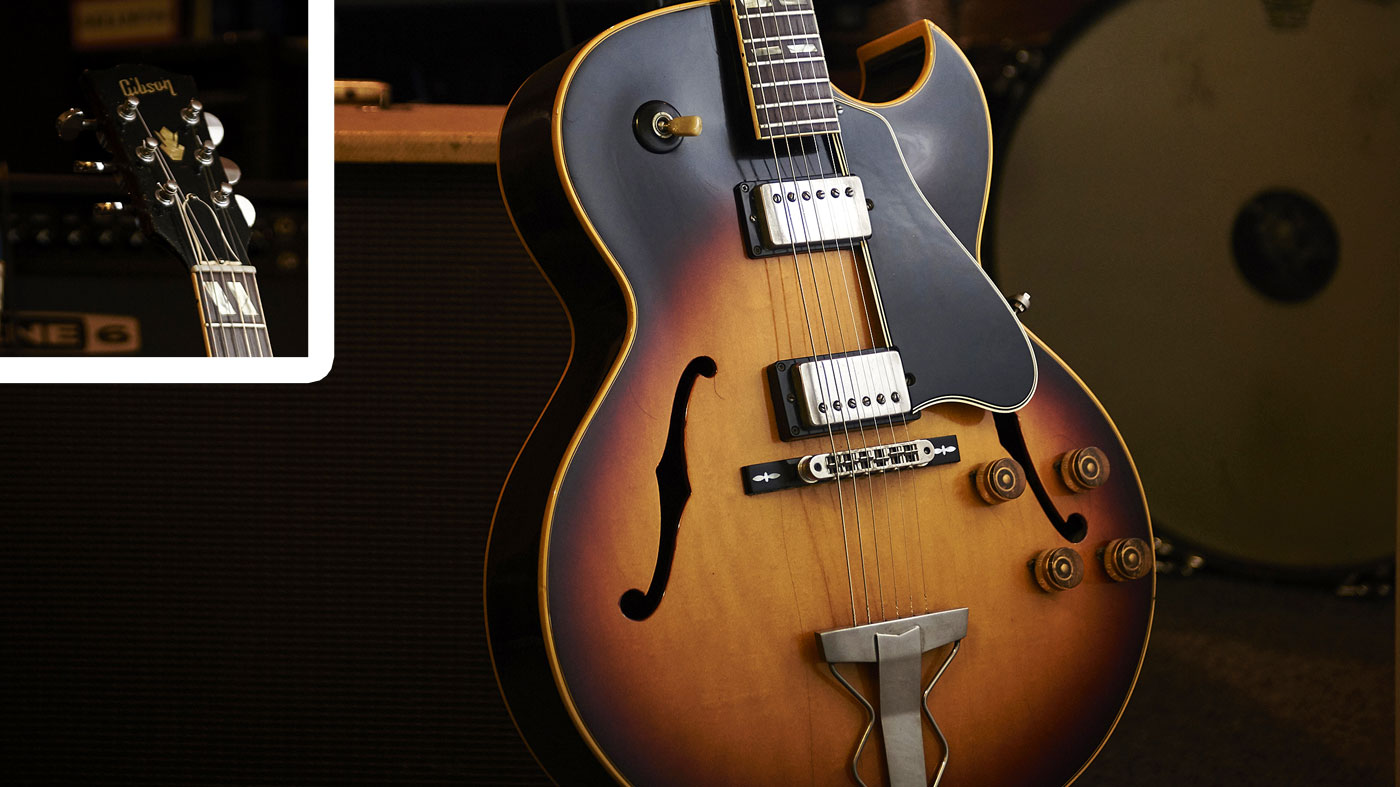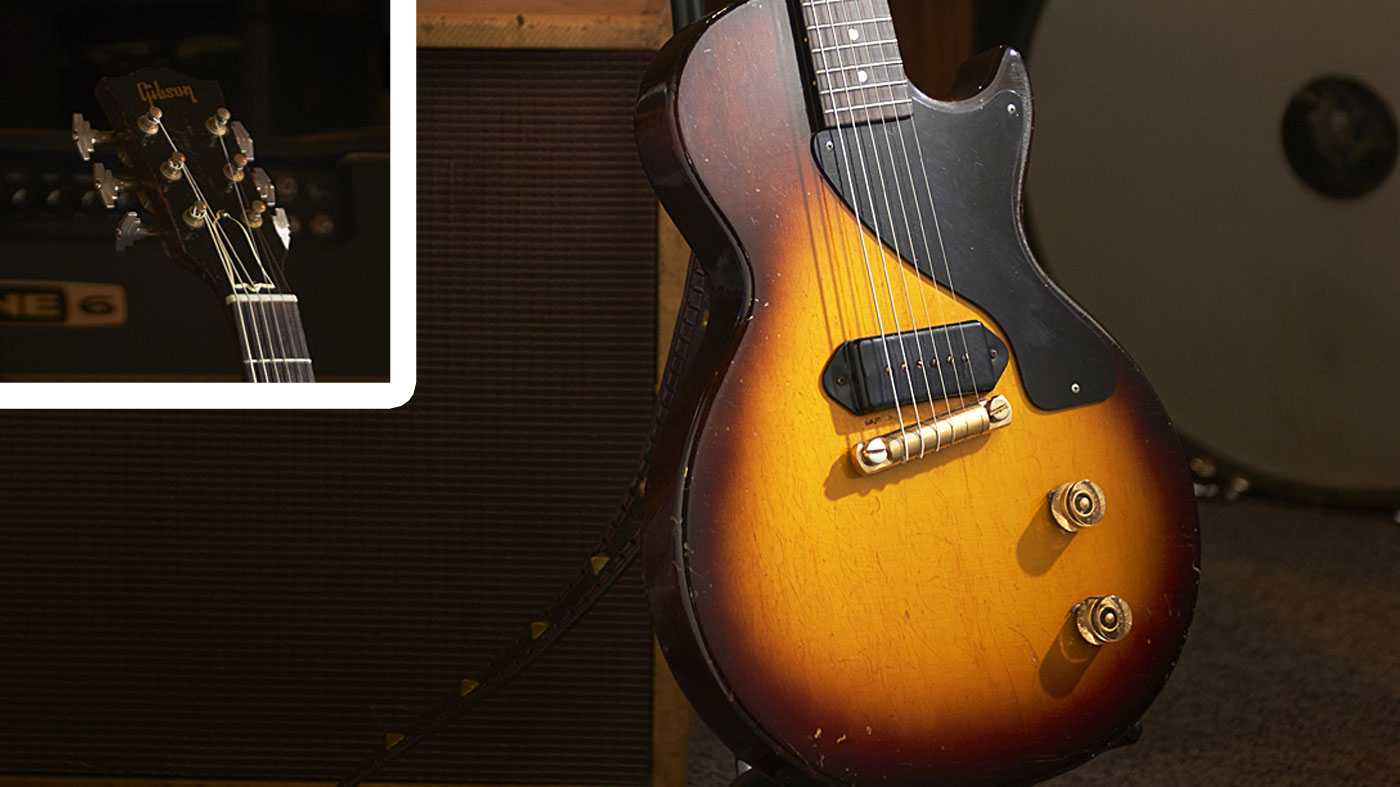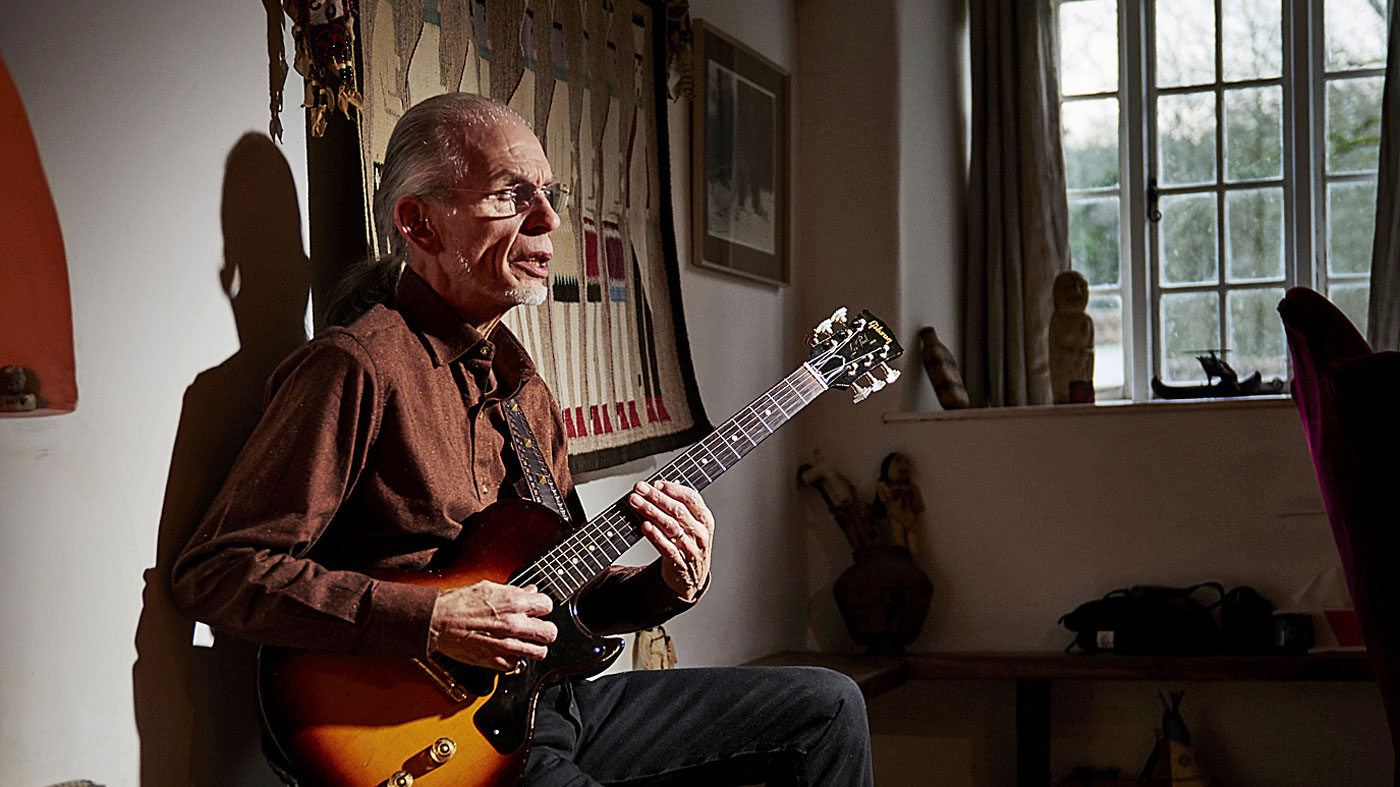Steve Howe: “Guitars always give me a feeling of complete freedom”
The Yes legend on his journey as a guitarist and writer

Prog overlords Yes are celebrating the band’s 50th anniversary this year, so what better time to sit down with their legendary guitarist in the place where his story with the group began?
We’re sitting in the living room at Steve Howe’s cottage in the wilds of the Devon countryside. The significance here is that this is the very place that Yes chose to rehearse The Yes Album in 1970, Steve’s recorded debut with the band upon its release the following February.
The audition went sensationally; I went in there and thought that this is what I was looking for, a band that could really play and write
“The idea was a sort of hippy trademark,” he tells us. “Get back to nature, make a record, be together and be a unit, actually. Of course that’s incredibly testing, but we all got on fairly well.”
Steve’s story with Yes had started sometime earlier when their previous guitarist, Peter Banks, quit the band.
“Before Time And A Word had even come out Chris [Squire] had called me,” Steve continues. “I didn’t know the guys - they had a great reputation but I didn’t understand where they were coming from. The audition went sensationally; I went in there and thought that this is what I was looking for, a band that could really play and write.”
Up to this point, Steve had been a member of 60s psychedelic bands like Tomorrow and Bodast.
“We were there and we had flowers in our hair, or at least stars on our foreheads,” he laughs. But it was with Yes that Steve’s guitar playing really began to shine. Armed with his treasured Gibson ES-175 Steve wrote an important chapter in the book of prog rock guitar.
Want all the hottest music and gear news, reviews, deals, features and more, direct to your inbox? Sign up here.
In fact, the early 1970s proved to be a very fertile time for the music with Pink Floyd, Genesis, King Crimson and Led Zeppelin creating some of their most enduring and ground-breaking work during that time, which is where we begin our conversation.
Yes men
What was it that kick-started all this diverse creativity?
“Goodness knows what it was. I’ve always put it down to a post-psychedelia reinvention of rock music because it had already got churned up quite a lot in psychedelic times, but I think it got broader then and orchestral spirits came into it. I think what was great about the bands you’ve mentioned, including Yes, was that each one of its members had a different story that they wanted to bring into the group.
“I wanted to bring my writing into the band - my guitar ideas, my chordal ideas and songs. When the guys in Yes started to go, ‘I’ve got this idea…’ you weren’t too consciously thinking that this comes from Chris’s background in church singing or Jon [Anderson]’s new found love of Sibelius or Stravinsky or my love for country music. And Bill [Bruford] wasn’t going to play 4/4, you know? He always knew what was appropriate, but he also knew what Bill Bruford would do with it.”
I think Close To The Edge was a model way of making an album - a 20-minute piece and two 10-minute pieces
What was the writing process like in Yes in those days?
“When I joined, Chris and Jon were the main writers and over those first three albums, it changed quite considerably. So The Yes Album was kinda like more piecemeal things; I had Würm, we collaborated on Yours Is No Disgrace… So the model on the first album was like we were feeling each other out; we had little bits we could put in, but arrangement, that was the key to Yes. Everything Yes did in the 70s that was great, was great because it was arranged. It wasn’t great because it was necessarily the best song in the world, but it was great because it got this treatment from Yes.
“The next album was a bit more of a step because Jon and I started to collaborate; we wrote Roundabout but Chris, Bill and Jon put together Heart Of The Sunrise, so we were all doing bits but no one was too predominant. By the time we got to Close To The Edge we’d really changed because Jon and I were really writing massively together and so we cooked up a lot of the Close To The Edge story. And You And I was a collaborative process - a long time in the rehearsal room, we went round and round the houses looking for that sound.”
Close To The Edge saw the beginning of the band’s more long-form pieces…
“I think Close To The Edge was a model way of making an album - a 20-minute piece and two 10-minute pieces, which, of course, we did again on Relayer. In fact, the writing process was always shifting and when we got to Tales From Topographic Oceans it was very much Jon and I - and the same with Relayer really. Jon had virtually written Gates Of Delirium but what you hear is the arrangement done by Yes, we all contributed to every song. There was no barring, like, ‘You can’t come in here because this is my song,’ it was like, ‘Here’s my song, how are we going to do it?’ And everybody would give their views, so that was basically the key.”
Gear through the years

1964 Gibson ES-175

1955 Les Paul Junior

1953 Martin 00-18

Modded Fender Telecaster
You’re known for using a wide range of guitars over the various Yes albums.
“I thought I didn’t have a sound - or that I hadn’t found my sound, so with the opportunity to buy into the Gibson range and have a lot of them, I thought, ‘I’ll try this…’ When I started Tales From Topographic Oceans, strangely enough, I started on an L-5; I thought that this was the ultimate Gibson guitar. It didn’t work. So the first side of Tales From Topographic Oceans is a continuation of Close To The Edge, it’s the 345 in stereo left and right with the volume pedal in the middle.
What an opportunity that guitar [the Telecaster] gives a guitarist. I mean, it’s a heck of a sound
“But when I got to the rest of the album, it was the Les Paul Junior on virtually all of that. It was almost like ignoring the 175 for a little bit, but it usually came in for guitar breaks, when I had a guitar solo on top of the band I’d usually try it on things and think, ‘I dunno, I’m happier on the 175…’
“Relayer was a Telecaster and I never thought I’d go for a Strat because I never got on with them in the early years but by the time Going For The One came I was Strat-ing up quite a bit and I really liked it. So both those albums are very Fender, Relayer having a Telecaster featured most of the time - and what an opportunity that guitar gives a guitarist. I mean, it’s a heck of a sound. I love Brad Paisley, Albert Lee, Jimmy Bryant and Jerry Donahue has to be mentioned - loads of guys who have come onto a Tele. I didn’t do that, I didn’t come on country at all on that album - To Be Over has the pedal steel and some mellowness, but the rest of it is angular, twangy, noisy; really exciting.
“Through Drama, Asia and GTR I’d learnt that the 175 was king; I’d got to that point. But strangely enough I felt restricted occasionally on a 175 because physically it’s that same guitar, and obviously other guitars and other stringed instruments always give me a feeling of complete freedom. Take Circus From Heaven, suddenly I’m on mandolin. I guess that was the excitement of searching for sounds - I was getting used to playing different sorts of guitars as well.”
When did you get your Gibson ES-175?
I sat the 175 in front of myself when I was listening to other music and I just gawped at it
“1964. It had to be ordered because I went to Selmer on Charing Cross Road and said, ‘I want a 175,’ and they went, ‘Well, we haven’t got any of those,’ so I thought, ‘Oh, no!’ So they said not to worry, they could get me one as long as I ordered it. So that’s what happened, they ordered it and two months later I went and picked it up.
“One of the guitarists that I admired at the time was Kenny Burrell and I got back, plugged it into a Fender Tremolux and played [sings] Chitlins Con Carne or something and… that’s Kenny Burrell! That is Kenny Burrell’s sound. He did play a 175, but his main guitar was a Super 400, which is partly why I have one and it is a wonderful sound. I wasn’t playing that type of music, but in my private time I was trying to get some of that jazz guitar styling together.
“When I first went out and did shows with it there was horror when I pulled it out and more horror when I put it back and started cleaning it! Must be off his head, because everybody just threw their guitar in the case and said, ‘Oh, I’ll see that tomorrow’. So I started loving this guitar and one of the things I did was I sat it in front of myself when I was listening to other music and I just gawped at it; it was just a beautiful thing to look at.”

Tales and Drama
Have you had it refretted?
“Once. Tim Stark from Mansons Guitars, Exeter was the only person ever allowed to do anything of that nature. People used to be amazed that I’d gone about 40 years on this guitar and it hadn’t been refretted and I’d played it a lot. I got used to the flat frets, in fact they were marvellous and it was wonderful to play but there were a few little problems - the 14th fret on the G got very buzzy. Tim said, ‘Well, look. I know you don’t want to have it refretted, but it’s the only way now…’”
Gibson has made you a couple of signature models, too.
There’s a certain sound that you only get with three pickups and it’s all over Fragile, particularly Long Distance Runaround
“They made a custom guitar for me in 78 that was kind of a mix of 175 and a Switchmaster, which is still a fundamental guitar that makes sense. The first Steve Howe model that came out I customised with three pickups - much like a Les Paul Custom three pickup era - but there’s a certain sound that you only get with three pickups and it’s all over Fragile, particularly Long Distance Runaround - there’s what I call ‘gulpiness’ when you get those three pickups working together.”
What does it feel like revisiting classic Yes material?
“It was about five or six years ago that we invented the ‘album series’. We started with a very adventurous three albums in one night: Going For The One, Close To The Edge and The Yes Album, starting the process of looking at albums as complete entities. It came down to, ‘What haven’t we done yet?’ [laughs].
“We talked about different things and to do four sides of Tales From Topographic Oceans was a big chunk so maybe we’d better just do one and four. We owed the UK and Europe to come back and do some Tales From Topographic Oceans because it’s been years since we played one or four.
“We’re not doing Drama as a counterpoint, because I think we’ve done Drama in the UK. The set that we’ve been doing is what I call the ‘one to 10’ where we do one song from each of the first 10 albums. So we start with Survival, we do Time And A Word, Yours Is No Disgrace, South Side Of The Sky… we walk through the albums but just playing one song, and that’s been quite fun and it does mean that you’ve got the story of the main era that we’ve been talking about.”
The latest Yes album Topographic Drama is available now on Rhino records. The band’s UK tour is underway now.

